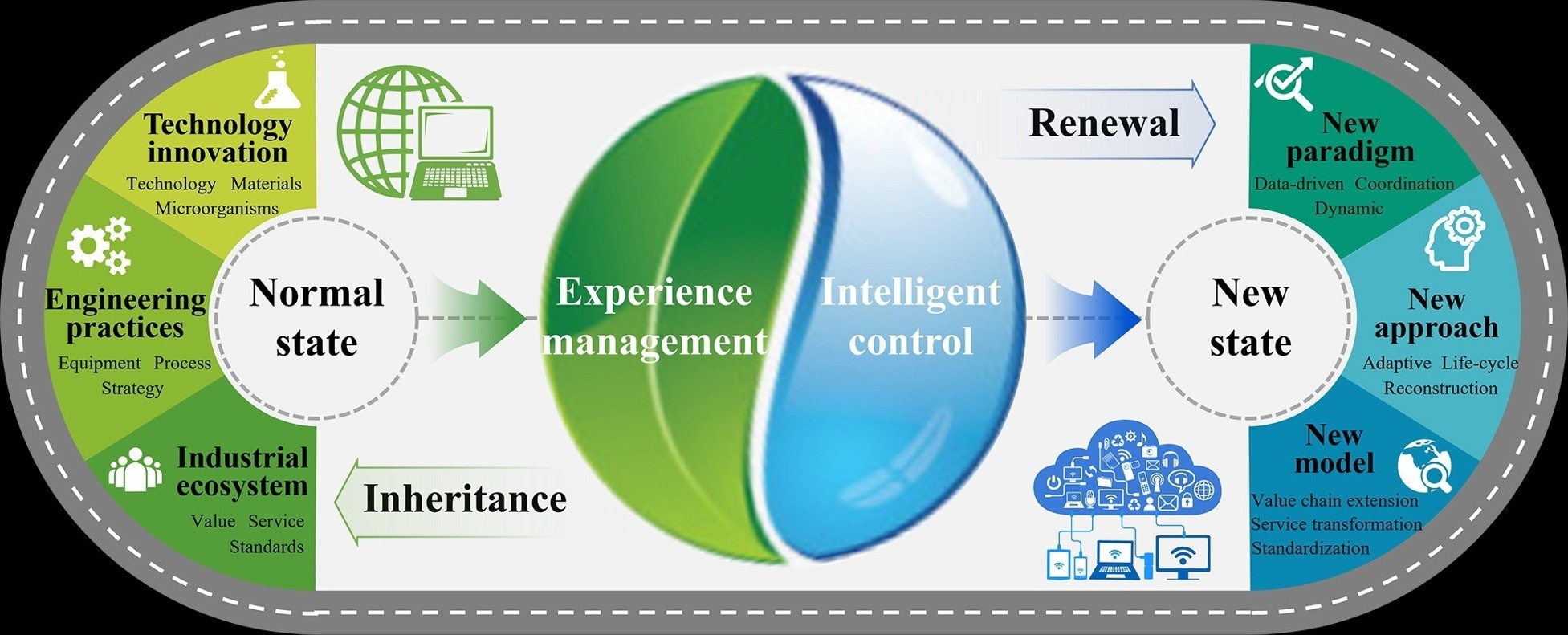Outdated water systems can’t keep up with today’s climate and pollution challenges, but AI could be the game-changer. This new roadmap demonstrates how artificial intelligence can revolutionize water treatment, from the lab bench to industrial pipelines, by building resilient and efficient systems that are fit for the future.
 AI-driven transformation of water treatment technology and industry.
AI-driven transformation of water treatment technology and industry.
Water scarcity is accelerating worldwide, driven by surging demand, pollution, and climate volatility. Yet, most water treatment systems still rely on rigid, manual processes that are ill-suited for today's complex challenges. These outdated methods fall short when sudden shifts in water quality or unexpected weather events occur, often leading to inefficiencies and missed opportunities for resource recovery. Meanwhile, artificial intelligence (AI) has begun transforming fields ranging from transportation to healthcare; why not water? AI's unique ability to process vast data, predict outcomes, and learn from changing environments holds immense promise. Due to these persistent challenges, there is an urgent need to explore how AI can be systematically integrated into the water treatment process.
A new perspective published in the journal Frontiers of Environmental Science & Engineering by a team from Nanjing University proposes a new blueprint for the water sector in the age of AI. Led by Lili Jin, Hui Huang, and Hongqiang Ren, the study presents a three-axis roadmap for integrating AI across technological, engineering, and industrial levels. Drawing on real-world case studies and emerging technologies, the authors present a comprehensive framework for AI-driven water treatment, aiming to deliver sustainability, efficiency, and resilience at scale.
Technological Innovation
The study outlines a sweeping transformation: from isolated technological fixes to a fully integrated smart water ecosystem. On the technological front, AI accelerates the design of advanced membranes, programmable nanomaterials, and microbial communities tailored for the degradation of pollutants. These innovations drastically improve efficiency, reduce costs, and boost adaptability.
Engineering Applications
In terms of engineering practices, AI empowers real-time control via digital twins, reinforcement learning algorithms, and predictive analytics. For example, smart aeration systems guided by AI can slash energy use by over 30% while maintaining water quality standards. Beyond operational gains, the research demonstrates how AI facilitates lifecycle-wide coordination, spanning from raw water allocation to effluent reuse and emergency response.
Industrial Integration
On the industry level, AI extends the value chain from infrastructure to data services. "Water Treatment as a Service" models are emerging, where utilities pay based on performance metrics, such as pollutant removal or water reuse volumes. This shift fosters more flexible, transparent, and sustainable business ecosystems. The result is a system that not only treats water but also continuously learns, adapts, and improves, ushering in a new paradigm of intelligent, service-driven water management.
"AI is more than a tool—it's a strategic partner in reimagining the entire water treatment ecosystem," says Prof. Hui Huang, corresponding author of the paper. "By embedding AI into every stage—from material selection to process optimization—we can transform reactive systems into predictive, self-adapting infrastructures. This not only improves operational efficiency, but aligns the sector with broader goals like carbon neutrality, ecological balance, and sustainable development."
The Future of Smart Water Systems
The study envisions a near future where AI-powered water treatment systems become the norm rather than the exception. These intelligent systems can seamlessly coordinate operations, reduce environmental footprints, and ensure long-term reliability, even under extreme climate conditions. Applications range from real-time optimization in urban water networks to precision treatment in industrial zones and zero-discharge parks. With ongoing advances in sensors, cloud platforms, and machine learning models, the blueprint presented in this study could soon evolve into a plug-and-play model for smart water infrastructure worldwide, paving the way for greener cities and more resilient water futures.
Source:
Journal reference: